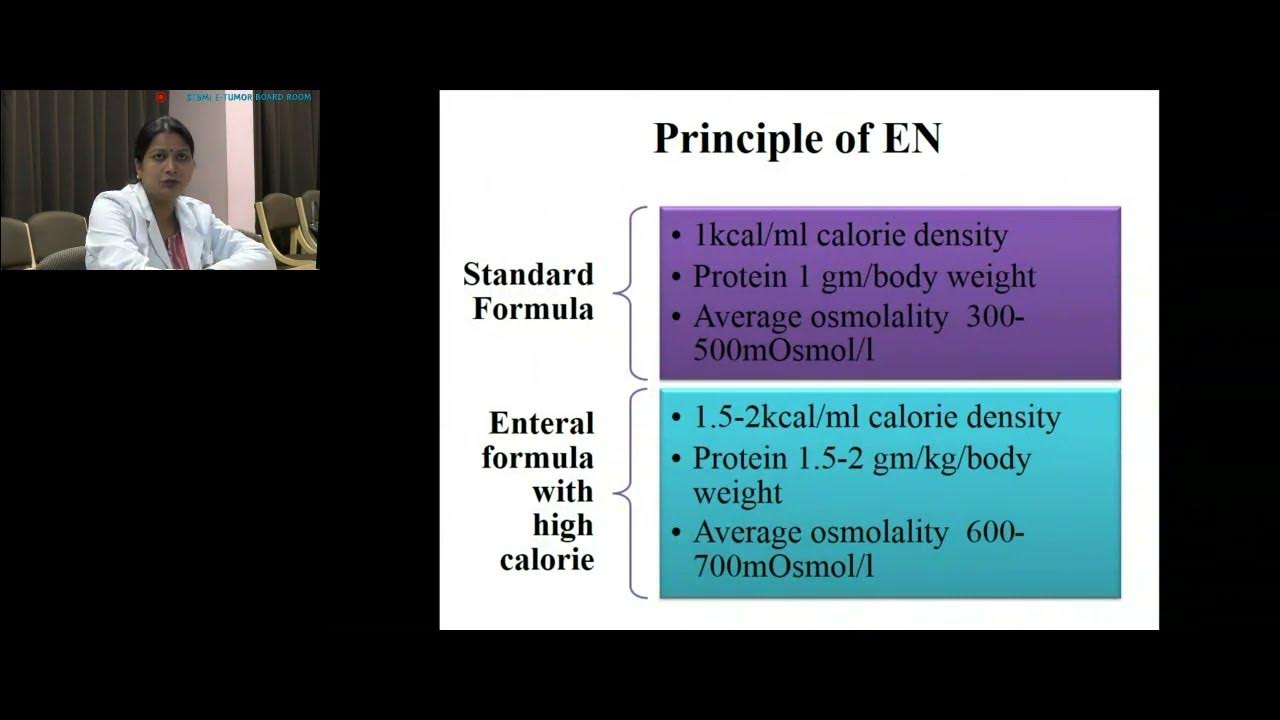The Basics of Carbohydrate Digestion
Summary
TLDRThis video explores the essential considerations for introducing fiber in enteral nutrition, highlighting its potential benefits for patients with stable gastrointestinal function. It emphasizes the importance of assessing individual patient conditions, particularly hemodynamic stability and gastrointestinal motility, before incorporating fiber. The discussion includes dietary recommendations based on USDA guidelines and addresses how fiber can help alleviate diarrhea. The video aims to reinforce basic concepts of carbohydrate digestion and invites viewers to engage with further content on nutrient absorption. Overall, it serves as a practical guide for healthcare professionals managing enteral nutrition in diverse patient populations.
Takeaways
- 😀 Fiber introduction in enteral nutrition is beneficial if patients tolerate it well.
- 😀 Long-term enteral nutrition patients should be assessed for fiber addition to meet dietary recommendations.
- 😀 Fiber can help form solid stools and alleviate persistent diarrhea in patients.
- 😀 Hemodynamically unstable patients are not ready for enteral nutrition or fiber-containing formulas.
- 😀 Soluble fiber may be considered for patients with improving hemodynamic stability but should be tailored to individual needs.
- 😀 Patients with bowel ischemia or severe GI dysmotility are generally not appropriate candidates for fiber introduction.
- 😀 Understanding carbohydrate content is crucial for both oral and enteral diets to optimize patient nutrition.
- 😀 Future educational content will cover the absorption and metabolism of proteins and fats.
- 😀 Monitoring and individual assessment are key when introducing dietary changes in enteral nutrition.
- 😀 Viewers are encouraged to engage by leaving questions and expressing interest in upcoming topics.
Q & A
What is the primary focus of the video?
-The video focuses on the introduction of fiber into enteral nutrition and discusses the conditions under which fiber can be beneficial for patients.
When is it appropriate to consider adding fiber to a patient's enteral nutrition?
-Fiber can be considered when a patient is stable, tolerating enteral nutrition well, and if they are expected to be on enteral nutrition for an extended period.
What role does fiber play for patients experiencing diarrhea?
-Fiber may help solidify stools, potentially reducing the incidence of diarrhea in patients who are experiencing persistent gastrointestinal issues.
What are the indicators that a patient is not ready for enteral nutrition?
-Patients who are not hemodynamically stable are generally not ready for enteral nutrition, which also includes not being ready for fiber-containing formulas.
How does gastrointestinal (GI) function affect fiber introduction?
-The introduction of fiber is specific to individual gut function; patients with severe GI dysmotility or bowel ischemia may not benefit from fiber as it could exacerbate their condition.
What are the USDA recommendations regarding fiber intake?
-The USDA recommends that most patients should incorporate fiber throughout the day, which supports the argument for including fiber in enteral nutrition.
What are the potential risks of introducing fiber to patients with bowel ischemia?
-Introducing fiber to patients with bowel ischemia could slow down the movement of substances through the GI tract and create additional complications due to their existing difficulties.
What future topics are promised in the video series?
-The video mentions upcoming content on the absorption and metabolism of carbohydrates, as well as detailed discussions on protein and fat digestion.
Why is individualized patient care emphasized in the discussion about fiber?
-Individualized care is essential because the suitability of fiber introduction depends on each patient's unique gut function and health status.
How can healthcare providers assess the readiness for fiber introduction in patients?
-Healthcare providers can assess readiness by evaluating the patient’s hemodynamic stability, GI function, and any ongoing symptoms that may affect nutrient absorption.
Outlines

Dieser Bereich ist nur für Premium-Benutzer verfügbar. Bitte führen Sie ein Upgrade durch, um auf diesen Abschnitt zuzugreifen.
Upgrade durchführenMindmap

Dieser Bereich ist nur für Premium-Benutzer verfügbar. Bitte führen Sie ein Upgrade durch, um auf diesen Abschnitt zuzugreifen.
Upgrade durchführenKeywords

Dieser Bereich ist nur für Premium-Benutzer verfügbar. Bitte führen Sie ein Upgrade durch, um auf diesen Abschnitt zuzugreifen.
Upgrade durchführenHighlights

Dieser Bereich ist nur für Premium-Benutzer verfügbar. Bitte führen Sie ein Upgrade durch, um auf diesen Abschnitt zuzugreifen.
Upgrade durchführenTranscripts

Dieser Bereich ist nur für Premium-Benutzer verfügbar. Bitte führen Sie ein Upgrade durch, um auf diesen Abschnitt zuzugreifen.
Upgrade durchführen5.0 / 5 (0 votes)






